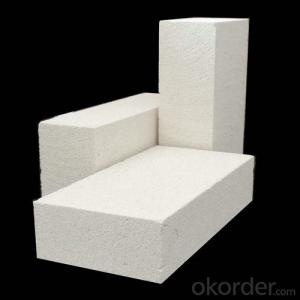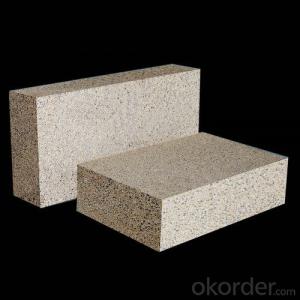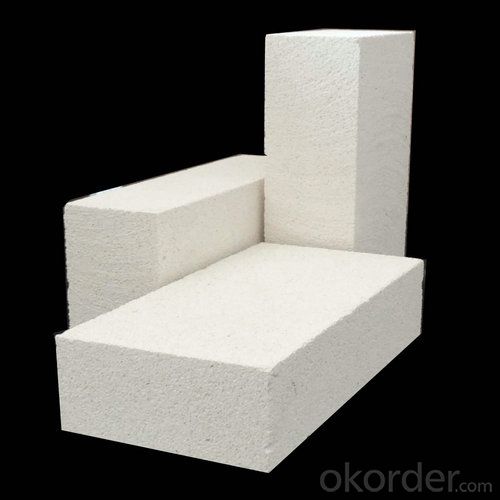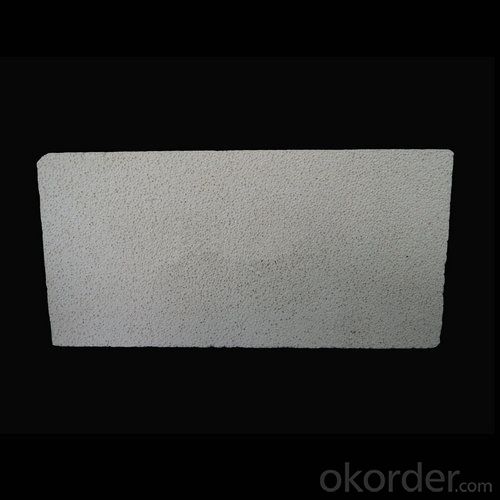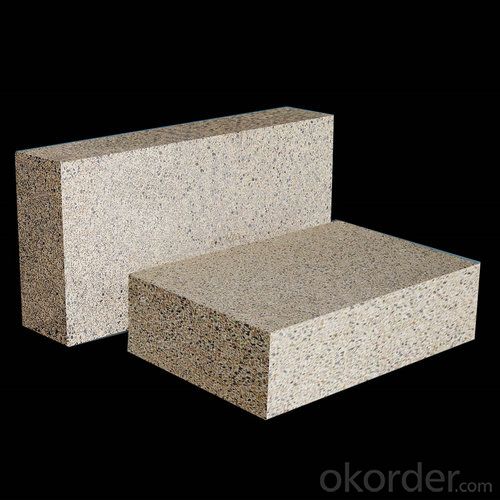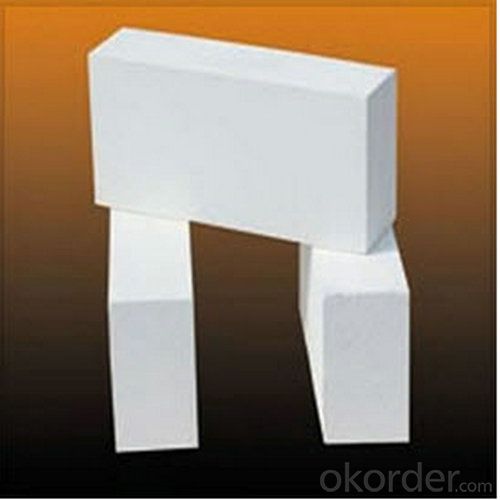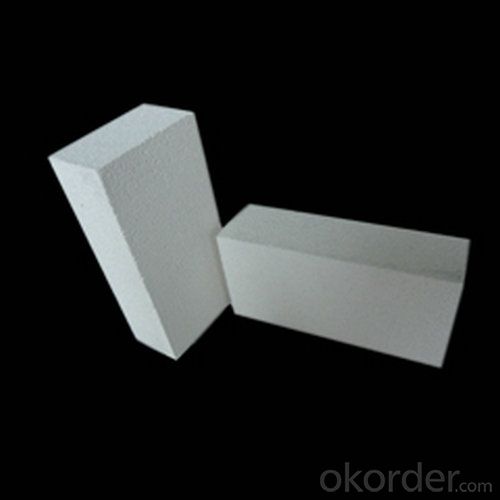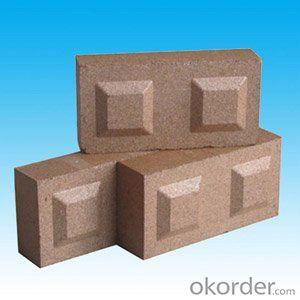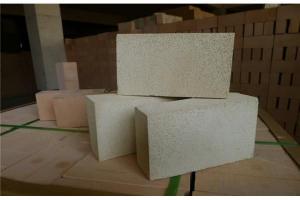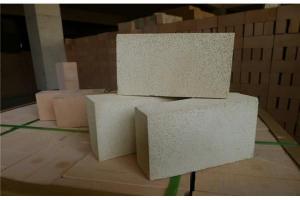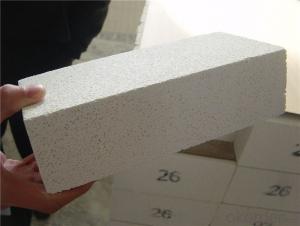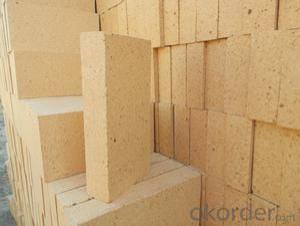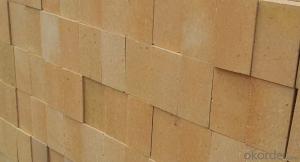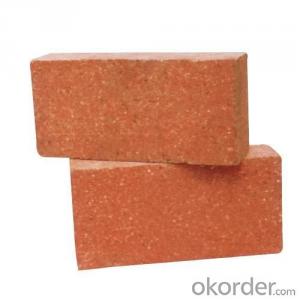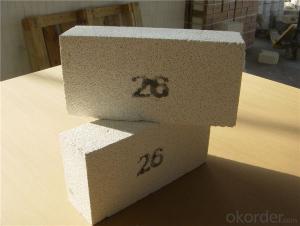Insulating Fire Brick GJM30 in Lightweight Fireclay - Made in China
- Loading Port:
- Tianjin
- Payment Terms:
- TT OR LC
- Min Order Qty:
- 1 m.t.
- Supply Capability:
- 20000 m.t./month
OKorder Service Pledge
OKorder Financial Service
You Might Also Like
Description of Insulating Brick
CMAX Insulating Brick are classified under temperature between 1300℃ to 1700℃, manufactured from high purity alumina clay.
Features of Insulating Brick
Light weight and low thermal conductivity
Low heat storage
Low iron and impurities
High thermal shock resistance
Specifications for Insulating Fire Brick
Applications of Insulating Brick
CMAX Insulating Brick can be used as a hot face lining directly exposed to the heat or as a backup insulation layer in iron and steel mills, non-ferrous foundries, petrochemical, ceramic, glass.
Specifications of Insulating Brick
Type No. |
Density |
Compressive Strength |
Rupture Strength | % Linear Change on Reheating | Thermal Shock Resistance, Times | Heat Conductive Cofficient | Al2O3 | Fe2O3 |
DJM-23 | 0.60 | 1.3 | 1.0 | 1230×12-0.5 | ≥20 | 400°C0.15 | 40 | 0.70 |
DJM-26 | 0.80 | 1.8 | 1.4 | 1400×12-0.5 | >20 | 600°C0.25 | 55 | 0.70 |
DJM-28 | 0.90 | 2.2 | 1.7 | 1510×12-1.0 | >20 | 600°C0.34 | 65 | 0.60 |
DJM-30 | 1.0 | 2.50 | 2.10 | 1600×12-1.0 | >20 | 600°C0.43 | 74 | 0.50 |
DJM-32 | 1.2 | 3.50 | 2.50 | 1650×12-1.0 | >20 | 600°C0.50 | 76 | 0.40 |
Images of Insulating Brick
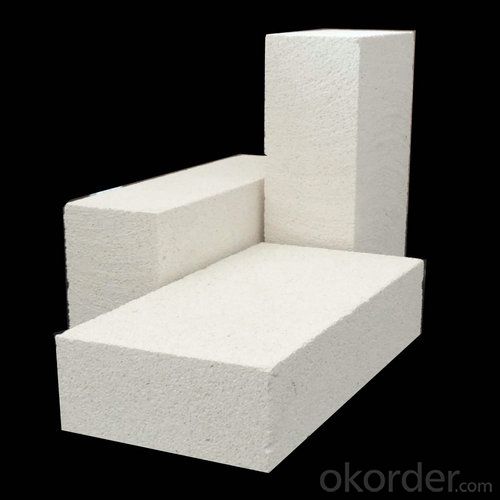
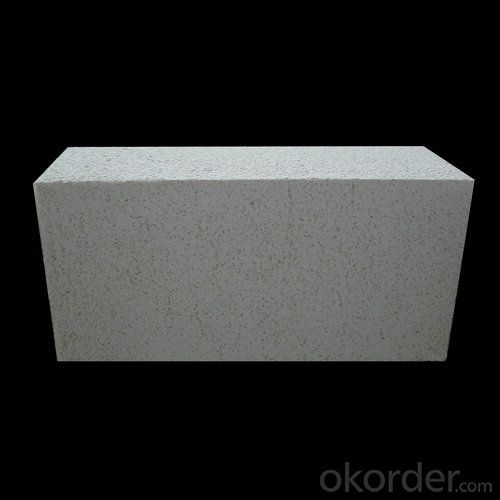
FAQ of Insulating Brick
1. Which products do you have?
We have all kinds of refractory brick, castable, mortar, cement, ceramic fiber products, etc.
Or you could browse our products to choose what you need.
2. Can you give me a general idea of the specification and technical data of your products?
CNBM offer a range of refractory and insulation products. We provide refractory bricks, monolithic refractories as well as ceramic fiber products. And On your given shapes, drawings or description, we are producing refractories with all sizes and shapes, resistant to temperature from 800 °C till 1800 °C, using various machines and equipments for cutting, grinding, drilling, polishing, shaping processes.
Every refractory product by CNBM is of superior quality. Lesser refractory products can not approach. CNBM utilizes proprietary testing methods, testing for chemical content, density, apparent porosity, cold crush strength and modulus of rapture. With stringent quality control, you can count on CNBM products to exceed refractory industry standards and your expectations.
3. Can you give me a brief introduction of the application of your products?
We are mainly specializing in the refractory materials in iron and steel, cement, glass, ceramics, petrochemical, electric power Industry, etc.
4. If I need your offer, what information do you need?
In order to choose suitable products, it will be appreciated to provide us the information, such us specification, technical data, order quantity, products application etc.
If any question, please contact us freely.
- Q: The project cost in hydropower No.3 shaft wall is solid brick or insulating brick?
- From the structure principle, hydropower shaft with solid brick, is to consider the safety performance of the structure.
- Q: Are insulating fire bricks resistant to fluorine gas?
- Yes, insulating fire bricks are generally resistant to fluorine gas due to their refractory properties and ability to withstand high temperatures and chemical corrosion.
- Q: Are insulating fire bricks resistant to hydrogen sulfide?
- In general, hydrogen sulfide is not withstood by insulating fire bricks. This highly corrosive gas has the ability to react with various substances, including fire bricks. Fire bricks, although engineered to endure high temperatures, lack a specific resistance to chemical corrosion. Consequently, when fire bricks encounter hydrogen sulfide, they may deteriorate gradually, resulting in possible harm or malfunction. Hence, it is advisable to employ alternative materials specifically crafted to withstand corrosion caused by hydrogen sulfide in situations where this gas is anticipated.
- Q: Can insulating fire bricks be used in the construction of pottery ovens?
- Insulating fire bricks are suitable for the construction of pottery ovens. They possess exceptional thermal properties, including low thermal conductivity and high heat resistance. These characteristics make them perfect for insulation and heat retention in pottery ovens, facilitating efficient and controlled firing of clay and ceramic materials. Furthermore, their lightweight nature simplifies handling and installation during construction. Ultimately, incorporating insulating fire bricks in pottery ovens ensures consistent and uniform heat distribution, leading to enhanced firing results and energy efficiency.
- Q: What is the porosity of insulating fire bricks?
- The porosity of insulating fire bricks refers to the amount of open space or voids within the material. Insulating fire bricks are designed to have a high porosity, typically ranging from 50% to 80%. This high porosity allows for excellent thermal insulation properties by trapping air or other insulating gases within the voids. The air pockets serve as barriers for heat transfer, reducing the conduction of thermal energy through the bricks. As a result, insulating fire bricks are highly effective in maintaining high temperatures within industrial furnaces, kilns, or other high-temperature applications while minimizing heat loss. The specific porosity of insulating fire bricks can vary depending on the manufacturing process and the desired level of insulation required for a particular application.
- Q: Are insulating fire bricks resistant to warping?
- Insulating fire bricks are known for their resistance to warping. They are specifically designed to withstand high temperatures and thermal shocks, preventing any potential warping. These bricks are crafted using lightweight materials like clay, silica, and alumina, which are combined with additives to enhance their insulation capabilities. Moreover, these additives not only contribute to the brick's insulation, but also aid in its resistance against warping. Furthermore, insulating fire bricks undergo a meticulous manufacturing process that ensures dimensional stability and reduces the risk of warping. It is worth mentioning, however, that prolonged and extreme exposure to high temperatures may still result in some warping, albeit to a lesser extent than other brick types.
- Q: Are insulating fire bricks suitable for use in boilers?
- Yes, insulating fire bricks are suitable for use in boilers. They have excellent thermal insulation properties, which help to minimize heat loss and increase energy efficiency in boilers. Additionally, their high temperature resistance ensures they can withstand the extreme heat generated within the boiler.
- Q: Do insulating fire bricks require curing after installation?
- No, insulating fire bricks do not require curing after installation. They are ready to use once installed.
- Q: Are insulating fire bricks resistant to freeze-thaw cycles?
- Yes, insulating fire bricks are generally resistant to freeze-thaw cycles. These bricks are designed to have low thermal conductivity and high resistance to thermal shock, which makes them highly durable and capable of withstanding extreme temperature variations, including freeze-thaw cycles. This resistance to freeze-thaw cycles is crucial in applications where the bricks are exposed to fluctuating temperatures, such as in furnaces, kilns, and other high-temperature environments. The insulating properties of these bricks also help to minimize heat loss and prevent moisture penetration, further enhancing their resistance to freeze-thaw cycles. However, it is important to note that the specific composition and manufacturing process of the insulating fire bricks can vary, so it is always recommended to consult the manufacturer's specifications and guidelines to ensure the bricks are suitable for the intended application.
- Q: Can insulating fire bricks be used in the construction of thermal insulation roofs?
- Insulating fire bricks are indeed applicable in the construction of thermal insulation roofs. Their design is tailored to possess exceptional thermal insulation characteristics, rendering them a perfect option for heat retention and energy efficiency needs. These bricks are crafted from lightweight materials like clay, which exhibit low thermal conductivity and remarkable resistance to heat transfer. Consequently, they effectively minimize heat loss or gain, making them suitable for thermal insulation roofs. Moreover, insulating fire bricks showcase durability and the ability to endure high temperatures, establishing them as a dependable choice for long-lasting utilization in roofing applications.
Send your message to us
Insulating Fire Brick GJM30 in Lightweight Fireclay - Made in China
- Loading Port:
- Tianjin
- Payment Terms:
- TT OR LC
- Min Order Qty:
- 1 m.t.
- Supply Capability:
- 20000 m.t./month
OKorder Service Pledge
OKorder Financial Service
Similar products
Hot products
Hot Searches
Related keywords
